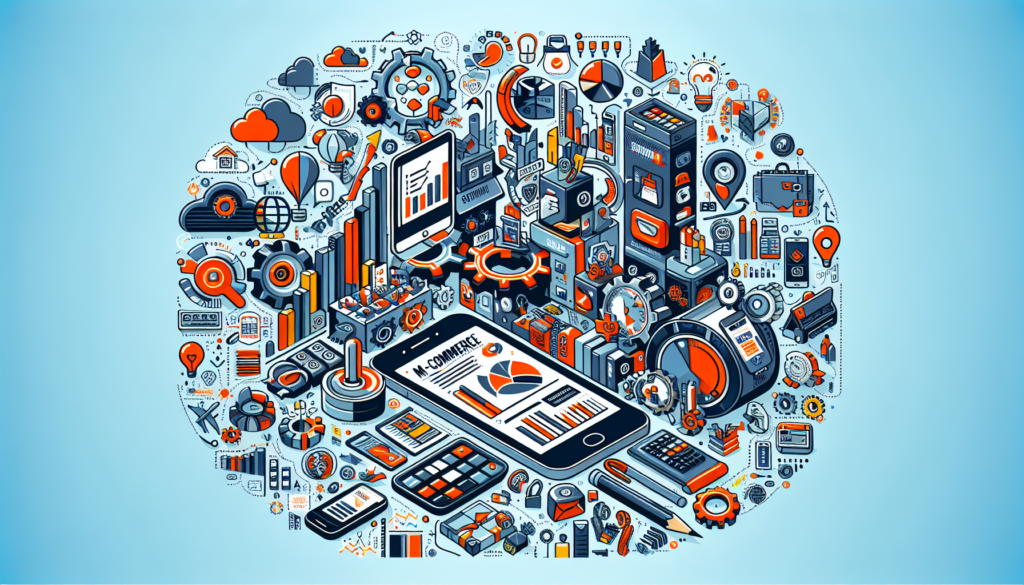Mobile commerce, or m-commerce, is the latest frontier in the evolution of e-commerce, marking a trend that highlights the importance of mobile devices in a company’s business strategy. This modality allows users to carry out transactions and access services through specialized apps on their smartphones or tablets, integrating user experience, portability, and ubiquity, and establishing itself as an essential channel for sales and loyalty. To fully understand how m-commerce redefines the business ecosystem, it’s necessary to explore everything from its technological foundations to the most disruptive innovations that characterize it.
Technical Foundations of M-commerce
M-commerce relies on the infrastructure and technologies of e-commerce, adding unique features of the mobile environment. Applications must be designed to work on different operating systems such as iOS and Android, adapt to various screen sizes and usage conditions demanded by mobile devices. In addition, mobile connectivity plays a crucial role; technologies like 5G enable faster and more secure transactions.
User Interfaces and Mobile Experience
The user experience (UX) in m-commerce is critical: it must be intuitive and quick, fostering engagement and minimizing abandonment rates. This implies the design of user interfaces (UI) that are responsive and adaptive, as well as the use of design patterns focused on the mobile user. The use of methodologies like human-centered design ensures that mobile applications meet the needs and preferences of users.
Security and Mobile Payments
Security is imperative in m-commerce to protect sensitive data and financial transactions. Mobile payments benefit from technologies like tokenization, which replaces credit card information with a unique token. Emerging technologies such as biometrics, which facilitate authentication through fingerprints or facial recognition, not only enhance security but also provide convenience for users.
Recent Advances in M-commerce
The state of the art in m-commerce is influenced by the latest trends in technology, including the use of artificial intelligence (AI) for the personalization of offers, machine learning to understand user behavior, and the Internet of Things (IoT) that interconnects mobile devices with other elements of the user’s digital ecosystem.
Augmented Reality and Virtual Reality
Augmented reality (AR) and virtual reality (VR) emerge as powerful tools in m-commerce, allowing users to visualize products in a more interactive and appealing way. Fashion and furniture brands, for example, have incorporated AR so that their customers can see how a piece of clothing or furniture would look in their environment.
Virtual Assistants and Chatbots
The development of advanced virtual assistants and chatbots improves user interaction by offering more effective and personalized customer service. These systems are increasingly integrated into m-commerce applications, making it easier for users to make purchases, check order statuses, and receive real-time assistance.
Practical Applications and Case Studies
The most outstanding applications of m-commerce are those that achieve a harmonious integration between functionality, design, and user experience. A relevant case study is Amazon, with its mobile application that allows for everything from purchasing products to controlling the streaming service through the same platform.
Another significant example is Starbucks, which through its app, has created a mobile ecosystem that combines loyalty programs, pre-orders, and contactless payments, creating a user experience that goes beyond simple transactions.
Competitive Advantages and Future Directions
Incorporating m-commerce strategies provides substantial competitive advantages to companies. It facilitates access to consumer behavior data, allows for the personalization of services, and improves operational efficiency. In the future, the convergence between m-commerce and emerging technologies like blockchain and autonomous vehicles promises innovations that could revolutionize the concept of product and service delivery.
Potential for Expansion and Innovation
The potential for expansion of m-commerce capabilities is vast. With advances in AI and predictive analysis algorithms, companies will offer even more individualized and anticipatory shopping experiences. Integration with wearables and connected devices could lead to scenarios where m-commerce is part of an omnipresent service ecosystem fully integrated into the daily life of the user.
M-commerce not only transforms the way companies interact with their customers but also constantly redefines the structure of the competitive market. Those companies that understand and adopt the dynamics of m-commerce will be able to capitalize on its benefits and lead digital transformation in an increasingly mobile world.

